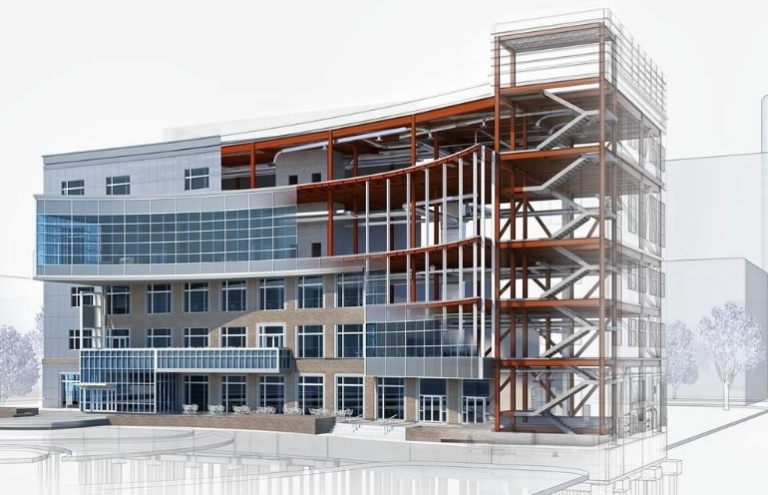Here are key aspects of Revit and reasons why it is widely used in the AEC industry:
- Building Information Modeling (BIM): Revit allows users to create 3D models of buildings and structures. BIM goes beyond traditional 2D drafting by incorporating information about the building components, materials, and other relevant data. This approach enhances collaboration, coordination, and communication among different stakeholders throughout the project lifecycle.
- Integrated Design and Documentation: Revit integrates various aspects of the design and documentation process. Changes made in one part of the model are automatically reflected in all related views, plans, and schedules. This helps ensure consistency and accuracy throughout the project.
- Parametric Design: Revit is known for its parametric design capabilities. Elements in the model are defined by parameters, allowing users to easily make changes and see how they impact the entire project. This parametric approach enhances flexibility and efficiency in design iterations.
- Collaboration and Coordination: Revit facilitates collaboration among architects, engineers, and other project stakeholders. Multiple team members can work on the same model simultaneously, and changes are coordinated in real-time. This helps reduce errors, conflicts, and misunderstandings during the design and construction phases.
- Quantities and Scheduling: Revit allows users to extract quantities and generate schedules directly from the model. This streamlines the process of estimating costs, tracking project progress, and managing resources.
- Visualization and Rendering: The software provides tools for creating realistic 3D visualizations and renderings. This is valuable for presentations, client communication, and marketing materials, allowing stakeholders to better understand the design intent.
- Analysis and Simulation: Revit supports various analysis and simulation tools for aspects such as energy efficiency, structural performance, and lighting. This helps architects and engineers make informed decisions early in the design process.
- Regulatory Compliance: Revit can assist in ensuring that designs comply with building codes and regulations. Users can incorporate relevant data and perform analyses to verify compliance with standards and requirements.
Overall, Revit is a powerful tool that enhances efficiency, collaboration, and accuracy in the design, construction, and maintenance of buildings. Its adoption has become widespread due to the benefits it offers in terms of BIM-based workflows and improved project outcomes. Read The Book>>


